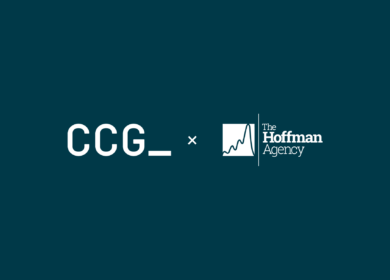The talent shortage was a predictable focal point in a recent discussion with supply chain leaders, underscoring the critical role of the brand in any resilience strategy.

I recently had the opportunity to moderate a panel on supply chain resilience-building at the Singapore Semiconductor Industry Association’s (SSIA) 55th anniversary summit. A spirited discussion highlighted the perennial issue of talent as a make-or-break factor. Other areas of focus included the need for a collaborative rather than transactional approach, and for robust internal processes that allow transformation to take root.
Our intrepid panelists included Michael Ciatto, supply chain service line CEO at Genpact; Peter Dressler, VP of corporate supply chain logistics at Infineon Technologies; Khoo Kah Leng, MD of global supply chain at Applied Materials; and Siew Pai Oak, head of business development at Siemens. Here are some key takeaways, most of which apply well beyond the immediate field of discussion.
‘Agility’ can only become a reality if companies are set up for it
The word ‘agility’ has become a fixture of corporate speak since the pandemic, but it’s a state that doesn’t come as easily as many would have us believe. Adopting an agile mindset is one thing; there is still a serious shortage of systems, processes and talent to enable agile operations. The lack of investment in preparedness is partly down to the constant drive for cost-effectiveness. But this approach comes at its own high cost when sudden disruption calls for adaptation to maintain customer service. Of course, in a supply chain context, it is also critical to choose partners who are set up for agility, otherwise the best efforts to get one’s own house in order will fall flat.
Seek more collaboration, less transaction
Diversifying the supply chain gives an organization options in the face of disruption. But the ability to collaborate might be the single most important factor in building resilience as a business. As our panellists pointed out, the tech industry is cyclical. There will always be bad times as well as good. Navigating them effectively calls for real relationship building and trust, not just transactional engagement. “We need to learn to work together,” said Infineon’s Peter Dressler.
Transparency is in the interests of the value chain because it would make things vastly more efficient. But unless transparency becomes mandatory across the entire chain, it will likely mean the playing field is uneven. Dressler added that the more transparent you become, the more chance there is of becoming part of a “power game”. “We need to get better as a global industry to [ensure] that transparency is accepted and that you don’t kill the others.”
Exploit technology to work smarter
Digitalisation can help supply chains become more transparent and robust by identifying potential bottlenecks and additional suppliers, Genpact’s Michael Ciatto pointed out. But as with becoming more “agile”, a business needs the right internal processes in place to act on that visibility. While admittedly overhyped, generative AI can play an important role in speeding things up. According to Dressler, change managers may need to swallow their pride and admit “that some AI algorithms are more intelligent than people”.
Businesses can also use technology to support the wider ecosystem. At Siemens, Siew Pai Oak said they are exploring ways to support partners’ planning processes by helping them keep up to speed with the components market, highlighting areas like trending products and buying patterns.
Key to any new technology having an impact on a company’s resilience is having a system in place to ensure people use it. As Ciatto pointed out, “you can invest in new technology but people default to what is familiar”. This results in disconnected decision points and ultimately, little progress.
Semiconductors can — and must — become sustainable
Investors, procurement officers and other stakeholders across the supply chain are rightly demanding sustainability credentials from the outfits they do business with. This has seen businesses across many sectors claim that sustainability is “part of our culture”. Often, this simply isn’t true. The reality is that for most, including players in the semiconductor business, achieving sustainability is very much a work in progress, and it pays to be open about the challenges and learn collectively as an industry. One notion holding back progress is that “sustainability and profitability are a trade-off”, Ciatto said. He pointed to ASML as a company that proves this doesn’t have to be the case: 96% of all machines it has produced are still in use.
“Until senior leadership starts to think this isn’t a trade-off, we’re not going to see a change,” he said.
There’s an easy way to balance cost pressures amid supply shocks
Dressler advised allocating a monetary figure to a specific bad scenario. “This tells you very easily whether or not you can afford it,” he said — and gives a sense of what you might need in place in terms of backups.
In theory, the more systems you can have in place that simplify or automate decision-making, the bigger your potential for resilience and innovation. The information communications technology (ICT) sector is leading the charge in removing human roadblocks and enabling them to create value with less distraction.
Placing people where they can be most useful is a priority for all semiconductor businesses. “We are definitely short of talent,” said Khoo Kah Leng of Applied Materials. “We need to build capabilities internally and build the talent pipeline.” To that end we are likely to see more in the way of tie-ups between the private, public and academic sectors. In an ever-uncertain business, one thing is clear: that building resilience is very much a team effort.
As well as adopting a collaborative mindset, tech companies also need to give renewed attention to their brands as employers. The talent pool for a field like semiconductors is not huge. To reach the people it needs, a company must not only have its story straight in terms of what it can offer the best and brightest — it must be able to tell that story in a way that is relatable and compelling. As our experience has shown, that means balancing the inherent complexity of the industry with language that addresses would-be hires as human-beings. Getting this right should be top of mind for every business leader, marketer and communicator in today’s tech space.
You can watch the whole discussion here. To find out more about how we can support talent acquisition in Asia-Pacific, get in touch at [email protected].

